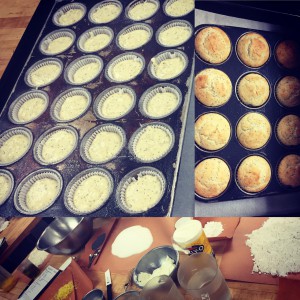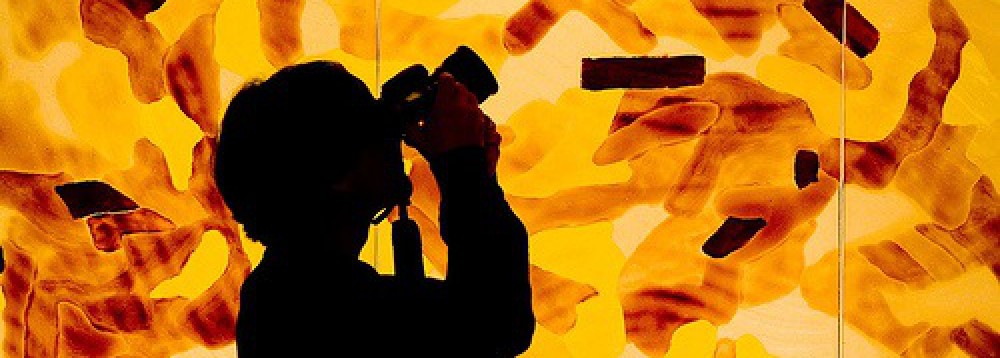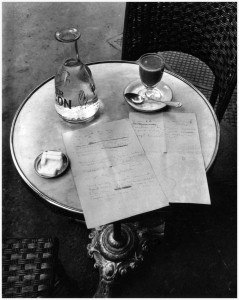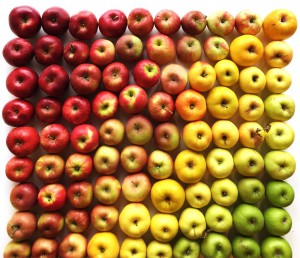I think Robert Frank’s photos are not really artistic but they were raw and very straight forward. Most of his photos were a lot like the everyday life of pedestrians so his work capturing them were impressive, mainly because they all told a story. I understand that he was trying to expose everything that he was enlightened with, being that he was not an American so therefore to me his work was bleak. I think because he too was trying to understand America and its diversity is what made his pictures so interesting. Nonetheless, Robert did a very good job shedding light on segregation through images and what seems to be the culture shown in each photo.
Tag Archives: photography
HW 9: Robert Frank
I think that Robert Frank’s photographs are artistic. They are some sort of a metaphor of the relationship between one individual and whole nation. To him, artistic is simple. In his works, Frank tries to bring out the idea of one person being a buidling block of the society and how one could relate to a country as a whole. His themes consist of ordinary and lonely people, politics and religion. Robert Frank’s goal is to figure out what the world is like so he uses the photography to share his personal vision with others.
homework #8
After reading the biography of Robert Capa it confused me a little on whether to believe if it was staged or not because there was a lot of allegations based on that very famous picture taken during the Spanish Civil War. It confused my judgement because I have watched other pictures taken by Robert Capa and they seem authentic to me. However, after looking at both pictures in the article I questioned the authenticity of the picture. It looked staged because the picture beside Capa’s looked like someone that was in a war because of the grime and dirt on his clothing. The man had no control of his body judging from the the way it is thrown. Even his face looked like he was in pain or surprised by the hit. Then I looked at Caps’s photo and the man’s clothing looked at little too clean as if he had a change of clothes at war, and his body did not seem like it had received an unexpected hit. Because of my inability to decide whether Capa’s picture was fake or not right away, I do think authenticity matters because it helps to avoid all the accusations and alleged rumors. If one uses an original to duplicate or as inspiration to create something new I think it is okay, but if you are claiming something to be your own and especially to the public, I think they deserve to know the truth.
homework #7
Food Photography today is very common and easy to some of us that are highly skilled, down to some that what we may call a novice. I think from a professional aspect of driving sales, is the only thing that separates photography for marketing from photography for art. They both may involve editing to perfect the end result depending on the intent. Apart from that they both need each to be as successful or outstanding. The form of art will naturally drive sales or awareness, therefore I do not see much of their differences. As far as I see it, it is an art to be able to properly market anything, period. Just like the young girls that invented New Fork city, I doubt that they had a lot of marketing skills or even studied art as a major. It took very little knowledge and experience. All they used was an idea, and because of their love for food or taking pictures of food, made it easy to express through pictures.To conclude, I do not prefer photography for marketing over photography for art because to me they both represent an expression of how one feels and how we envision food.
Homework #6: Picturing Breakfast Around the World

Everyday the Dutch eat at least 750,000 slices of bread topped with butter and the chocolate sprinkles called hagelslag
The New York Times Magazine published a slideshow about what children eat for breakfast around the world. Read the article and share with your classmates your thoughts on breakfast as a meal. Do you think its essential? Are American breakfasts too sugary? In addition, please post a picture of something you think is essential for breakfast.
Read the NYTimes article “What kids around the world eat for breakfast.”
Please post your responses by Monday, November 23rd.
Ahmet D. Homework #5
Walker Evans created a very uncommon style that photograph people the way they are without a pose or anything else. I believe these photographs are the best ones. It is really hard not to smile when you see a camera. People always look different when they pose to the camera. Walker Evans did the hardest part and photographed people how they look, who and what they are. Walker Evans’s photographs are not stage, and that’s what I like about it. This makes his collection very unique. I still see the same expression on people faces, and their daily lives then and now. Everyone is minding their own business. Some are going to work, some are going to school or coming back from work. Everyone is busy with something! Now, I wonder why did he wait such a long time to publish these photographs?
Reminder: Luncheon and Presentations on Monday Nov 16th!
This is a reminder that we meet at 11:30 am in A631 on Monday November 16th to load your presentations before heading downstairs to the Janet Lefler Dining Room. I will lock up our classroom during lunch but you are welcome to lock things in your own lockers by the dining room. Please bring a thumbdrive with your groups’ Powerpoint or download your presentation from Google Drive/iCloud/etc. We will make our way down to the dining room at 11:45 am for our luncheon! After lunch, we will return to our classroom for your presentations. Be sure to submit one copy of the Powerpoint presentation for each group and your individual reflections on the project directly to me.
Please remember that the Dining Room has a business casual dress code. Therefore, remember no sneakers, no jeans, etc.
I look forward to seeing you tomorrow for a unique class meeting filled your photography, food, and maybe even a little poetry…
Felecia Stuart: The Food Photographing Generation.
It’s no secret that photography has taken over this generation. With the ongoing development of technology, and the growing dependancies on smartphones, you almost always have a camera available when needed. That being said, cell phones are being used less for direct contact and more for communicating via social media. Things like Facebook, Twitter, Snapchat, and especially Instagram are changing the way we express ourselves to the world. Instagram specifically targets photography. You take a photo and upload it within seconds and almost immediately after, you get a notification of someone liking it. Like the “Iphone 5” video showed, it gives you this false sense of fulfillment. I myself am guilty of posting photos on Instagram and waiting for the likes to add up. And though I have never posted pictures of food, I do follow several food blogs. I follow blogs that post recipes and blogs that give recommendations to different restaurants around NYC, you can kind of say its purely educational. I think the only time I personally take photos of my food, its food that I make and pictures of the steps to get to it. Maybe its because i’m not that great a photographer, or maybe its because I don’t really get the point, but I don’t see myself posting a picture of my dinner anytime soon. 
Looking at Food, Looking at Photography
Welcome! If you’re here, then you’re probably enrolled in “The Art of Food” Learning Community. We are three classes that will meet together in the Fall 2015 semester. All students are enrolled in Prof Cheng’s History of Photography ARTH1100-LC01 class and either Prof Garcelon’s Culinary I HGMT 1203-LC22 or Prof Jacus’s Baking & Pastry I HGMT 1204-LC28 class. This website is where you’ll submit much of your discussion and work for my History of Photography class. Although I’ll be grading your work, Professors Garcelon and Jacus will be looking in too, as well as commenting and participating. You will get many opportunities to think about what you produce in Culinary I and Baking & Pastry I in artistic terms, and better understand the history of the ever-changing medium of photography.
I look forward to meeting you in class. Look around, and check back frequently as I develop our class site, and please do not hesitate to contact me.





